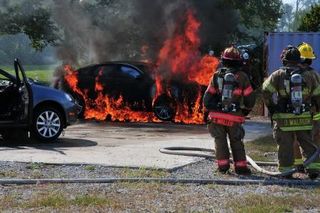
Partner Kent Emison was published in the most recent edition of Trial Journal, from the Illinois Trial Lawyers Association. His article, “Evaluating and litigating the fuel-fed fire case,” covers the variety of fuel defects still found in automobiles, and litigation trends pertaining to them.
Since the early 1970’s, manufacturers have admitted that motorists should not survive a crash and then burn to death in a fuel fed fire. If there is a burn injury or death from fire-related injuries in a survivable crash, there is potentially a legitimate case against the manufacturer. In these cases, the vehicle must be preserved for further evaluation by a qualified fire cause and origin expert and a fuel system design expert.
If one or more deaths are involved, autopsies are obtained to determine whether the fire contributed to the cause of death. Pathologists are very good at determining if thermal injuries contributed to causing a death. One note to be aware of in this type of auto litigation: where a vehicle fire is involved, it is common for the victim to have a very low level of carbon monoxide (CO). Sometimes the CO level is noted as “none detected” even though there are witnesses who confirm the victim was alive after the impact and obviously died from fire related injuries.
What comes up time and again in these types of cases is that auto manufacturers have the knowledge and technology today to prevent post-collision fuel fed fires in survivable crashes. Yet vehicle fires continue to severely injure and kill thousands of people every year. The National Fire Protection Association estimated in 2012 that an average of 152,300 auto fires occur in the U.S. each year, resulting in an average of four deaths every week.
This type of auto litigation can seem mysterious, because to the naked eye the principles that come into play in these cases are not immediately apparent. For instance, some would assume that if there is no visible hole in a fuel tank, then gasoline could not be involved in causing the fire.
But while a fuel tank puncture is certainly involved in a multitude of vehicle fires, there are other causes of vehicle fires. These include: fuel tank seam splits, filler-neck defects; check-valve defects; and siphoning defects.
Kent’s practice focuses fully on representing individuals in catastrophic personal injury matters. A Fellow in the International Academy of Trial Lawyers and a frequent lecturer to bar associations and trial lawyer groups nationwide, he has earned a national reputation in product liability, motor vehicle accidents, and other cases involving personal injury and wrongful death. He has served as lead trial counsel in numerous multi-million dollar verdicts and settlements and has handled cases all across the United States.

